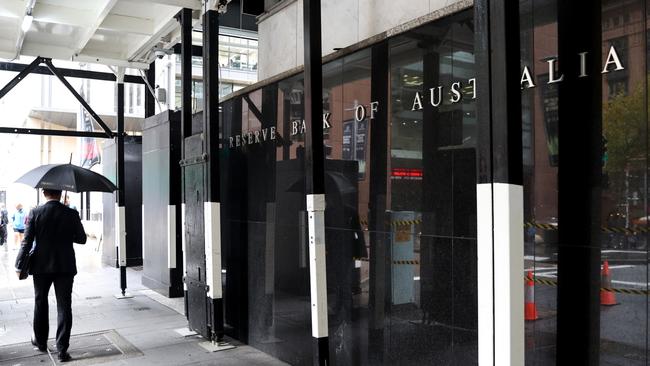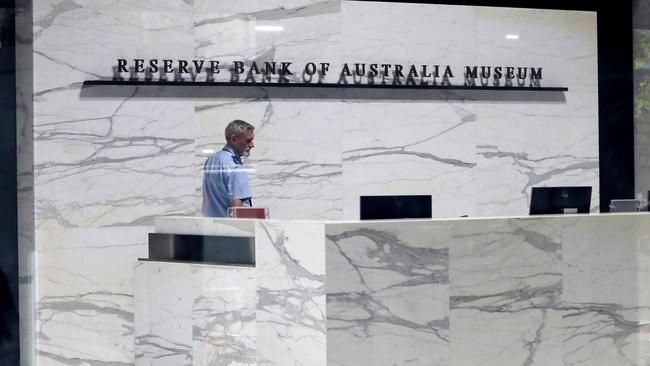RBA’s minutes from its June meeting omit a rates guidance
The Reserve Bank’s latest board minutes have left financial markets wondering – especially as the lately hawkish guidance tone was absent.

Financial markets were left wondering if the Reserve Bank would lift interest rates quite as much as expected after minutes from its June board meeting omitted a key line of guidance on further rises.
In his statement accompanying the bank’s surprising decision to lift rates a further 25 basis points to an 11-year high of 4.1 per cent at its meeting two weeks ago, RBA governor Philip Lowe said: “Some further tightening of monetary policy may be required to ensure that inflation returns to target in a reasonable time frame, but that will depend upon how the economy and inflation evolve.”
A version of that “hawkish guidance” on the potential for more rate rises had accompanied each post-meeting statement and meeting minutes since the RBA kicked off its aggressive 400 basis point interest rate tightening cycle in May 2022 in response to soaring inflation after the pandemic. But in a surprise twist, this hawkish interest rate guidance was missing from the minutes of the RBA’s June board meeting.
Given the “considerable uncertainty regarding the outlook for household spending and the financial stresses facing some households”, board members “agreed to continue to monitor trends in household spending closely and consider the implications for the inflation outlook, as well as developments in the global economy and the domestic labour market”, the minutes said.
Board members said the governor’s speech the following day would “provide an opportunity to explain the decision in more detail”. And Dr Lowe certainly explained the case for rate rises.
In his Morgan Stanley Australia Summit speech on “A Narrow Path”, Dr Lowe noted that the inflation expectations of trade union officials had “increased significantly”.
The RBA was seeking to avoid a situation where inflation stays “too high for too long”, causing a surge in inflation expectations that may become self-fulfilling.
“Some further tightening of monetary policy may be required, but that will depend upon how the economy and inflation evolve,” Dr Lowe said.
Subsequent to the June rate rise, Dr Lowe’s speech, and stronger-than-expected domestic jobs data, Australia’s three-year bond yield soared 55 basis points to a 12-year high of 4.08 per cent, the 10-year bond yield rose 34 basis points to 4.085 per cent. The dollar rose 5 per cent to a four-month high of US69.01c, also helped by a fall in the US dollar as the Fed paused its rate rises. But after the RBA minutes were released on Tuesday, the dollar fell from US68.52c to US67.98c, the three-year bond yield dipped 11 basis points to 3.95 per cent, and the S&P/ASX 200 share index rose 0.9 per cent to a seven-week high of 7357.8 points.
Exactly why the bank omitted such important and longstanding interest rate guidance is unclear. “What is more likely is that every move closer the RBA is to the end of the cycle, the less forward guidance they are likely to provide,” ANZ senior economist Adelaide Timbrell said.
Other economists downplayed the significance of the omission.

RBA communication has been “messy” at times, but more weight should be given to the June policy statement that said more rate rises “may be required” and the “hawkish speeches by RBA officials”. An economist said off the record: “Notwithstanding the poor communication at times, the proof is in the pudding – the RBA has hiked in 12 of the past 13 meetings.” Indeed, the overall tone of the minutes was quite hawkish.
“Members observed that inflation was already projected to be above target for a number of years and was expected to take somewhat longer to return to target in Australia than in some other countries,” the minutes said.
“This extended time frame reflected the board’s desire to bring inflation down, while at the same time preserving as many of the gains in employment as possible.”
“While this remained the board’s objective, members noted that a more prolonged period of above-target inflation would increase the risk that firms’ and households’ expectations for inflation rise. If this occurred, high inflation would become more persistent, with the result that interest rates would need to be higher for longer. This would increase the risk of a sharp rise in unemployment.”
Even after aggressive rate rises in the past year, goods price inflation fell less than in other countries in April, and services price inflation “had not yet shown signs of moderating and the evidence from abroad suggested that it may prove to be persistent”.
Wages growth was “still consistent with the inflation target, provided productivity growth picked up to around the average pace that had been recorded before the pandemic”.
But productivity in recent times had been “disappointing”.
Board members also discussed “the possibility of implicit indexation of wages to past high inflation and the potential for this to become widespread”.
They noted that some firms were indexing their prices, either implicitly or directly, to past inflation, increasing the risk that high inflation would be “persistent”, and making it “difficult to keep the economy on the narrow path”.
In her speech to the Ai Group in Newcastle on Tuesday, RBA deputy governor Michele Bullock said if policymakers didn’t get inflation under control, the economy faced a “deep and long-lasting recession” that would cause a “substantial rise in the unemployment rate”.
“Price stability is a prerequisite for a strong economy and full employment,” she said. “Indeed, it is very difficult to sustain full employment without price stability.
“If high inflation were to become entrenched in people’s expectations, it would be very costly to reduce later, involving even higher interest rates and a larger rise in unemployment.”




To join the conversation, please log in. Don't have an account? Register
Join the conversation, you are commenting as Logout